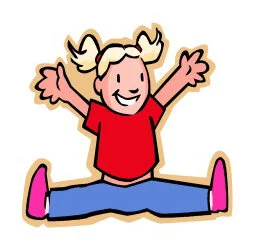Ethics – Values And The Decision-Making Process
I teach “Ethical Decision Making” a 4-hrs course, within the Canadian National Coaching Certification Program (NCCP). It is mandatory and coaches have to complete an Online Test as well. I share the content of this course in this Newsletter. Hopefully, it helps some of you in your critical decision-making. Ethics are “formal or professional rules of right and wrong and a system of conduct or behavior” (Gage Canadian Dictionary, 1997, p. 533). As the demand grows for higher standards of responsibility ethics have become the defining issues in today’s society. Companies, professional firms, and individuals alike are held increasingly accountable for their actions. Ethics are not limited to specific acts and defined moral codes but they encompass the whole of moral ideals and behaviors. They are, in essence, a part of a person’s life philosophy – and therefore part of the sport organization and those within that specific group (athletes, coaches, parents, judges, referees, and administrators).
Schloder. M. E. (2015). Personal NCCP Notes.
First of all, what is so important about ethics, values, and this process for the sport coach? Given existing ethical issues in sport, those involved need to deal with making ethical decisions at times or more often. Periodically, all of us have to deal with problems and events that ‘feel’ wrong or we have to evaluate situations as ‘right or wrong.’ This is associated with our value system (‘things’ we believe to be important). When values are compromised in sports ethical or legal issues arise. Coaches may be placed in the situation of having to make decisions or take action. It is of course critical to ‘sound management’ that a “Code of Ethics” with guidelines is in operation, outlining the expected conduct as to ‘good and right’ and expected behavior, and that all involved are familiar with the rules and regulations. I discussed in previous newsletters a ‘cheating’ scenario by a swimmer in my Kalos program. The decision was made to stop practice and discuss the event to teach all athletes about moral values, right and wrong – acceptable and unacceptable behavior, accountability, social responsibility toward teammates and coaches, and consequences for their action and behavior.Decision-making is the process of identifying and choosing alternatives based on the values and preferences of the decision-maker or the decision-making group. Doing so implies that there are alternative choices to be considered, and in such a case we want to identify as many of these alternatives as possible, and choose the one that best fits with our policies, values, and goals.
Schloder, M. E. (2015). Modified from “Ethical Decision-making.”
Personal Notes, NCCP Part A (2005).
Ethical-decision making is a step-by-step process as follows:
We seek or collect Information:This is the knowledge about the decision, the effects of the alternatives, the probability of each alternative, etc. The facts – not ‘hear say’ – are gathered – although too much information can reduce the quality of decision at times.
We consider Alternatives or Options:They are the possibilities of choice and are identified or can be developed if they do not exist.
We evaluate the Criteria:These are the characteristics or requirements that each alternative has to possess to a greater or lesser extent. Options are rated according to the quality of the inherent criterion.
We examine our Goals:It pertains to the question: What is to be accomplished?
We examine our Values:This refers to the desirability of the particular outcome.
We state our Preferences:These reflect the philosophy and moral hierarchy of the decision-maker, i.e., personal values dictate preferences.
We make the Decision and evaluate the Quality:This is a rating of whether a decision is good or bad. A good decision is a logical one based on the available information and reflecting the preferences of the decision-maker.
Certain factors or variables have to be considered: personal experience, personal values, and personal circumstances as well as internal and external influences tend to shape the process. The outcome should be based upon the ‘benefit for all or the common good,’ i.e., the decision-maker (athlete, parent, coaching staff, or administrator) follows rules and policies, fulfilling the obligations to the organization.
The Process involving Six Major Steps:
Analize The Event
Step 1: Establish the facts of the event – “not hearsay”Analyze the facts – What exactly happened?Who is involved? Where/when did the event happen?
Step 2: What’s at stake? For the team, club, coach community.Determine the “issue” (s) to see if there are legal or ethical implications?
Step 3: Consider the options and the consequences – here internal and external forces come into effect.Make the Decision: Assess the Options
Step 4: Assess the “Pros and Cons” of the available option(s).
Step 5: Select the best option and make the decision(s).Analyze the Event:Implement the selected Option:
Step 6: Implement the decision and manage the consequences – be ready to defend the selected option based on facts and the step-by-step process
Make the Decision: Assess the Options
Step 4: Assess the “Pros and Cons” of the available option(s).
Step 5: Select the best option and make the decision(s).
Implement the selected Option:
Step 6: Implement the decision and manage the consequences – be ready to defend the selected option based on facts and the step-by-step process
Since coaches have a lifelong impact upon on athletes it is important not only to establish a ‘sound and effective’ coaching philosophy but they also need to reflect on their coaching role through continuous self-evaluation. All too often, programs suffer because club parents or volunteer club board members start to exert pressure and/or self-serving influence. This may not only frustrate experienced coaches but it is especially overwhelming to novice coaches. Some may ‘fall prey’ to certain direct or indirect manipulation [external forces] in order to hold onto their livelihood. Establishing an effective coaching philosophy for program longevity and program success is the foundation for being a good and effective teacher-coach. Let this be a guideline:
…“Your attitude about who you are and what you have is a very little thing that makes a very big difference (Theodore Roosevelt)
According to the 1992 UNICEF and United Nations Social Policies…
…Childhood is now conceived as a ‘highly eventful and unique period of life’ that lays an important foundation for adult years and is highly differentiated. It is a special time of growth and change and any nation should invest in by educating its children. Children’s rights are to be guaranteed by society at large and the sole function is: a) to ‘nurture’ the next generation of children, and b) to assure the right to leisure, play, and participation in cultural and artistic activities...
As stated by UNESCO…
…Children who do not reach their full potential, who are destined to make fewer
contributions to society than society needs, and who do not take their place as productive adult members diminish the power of that society’s future…



